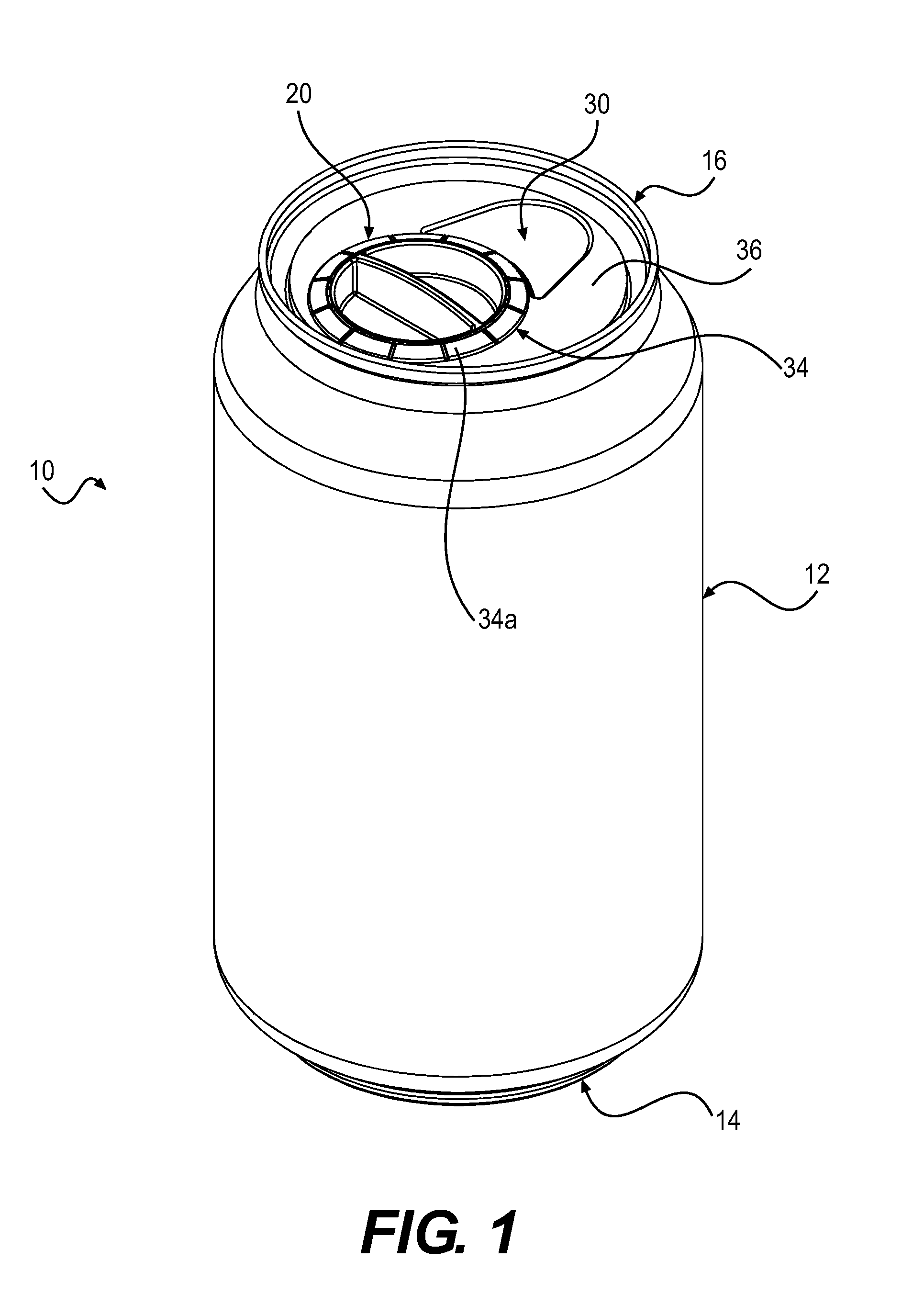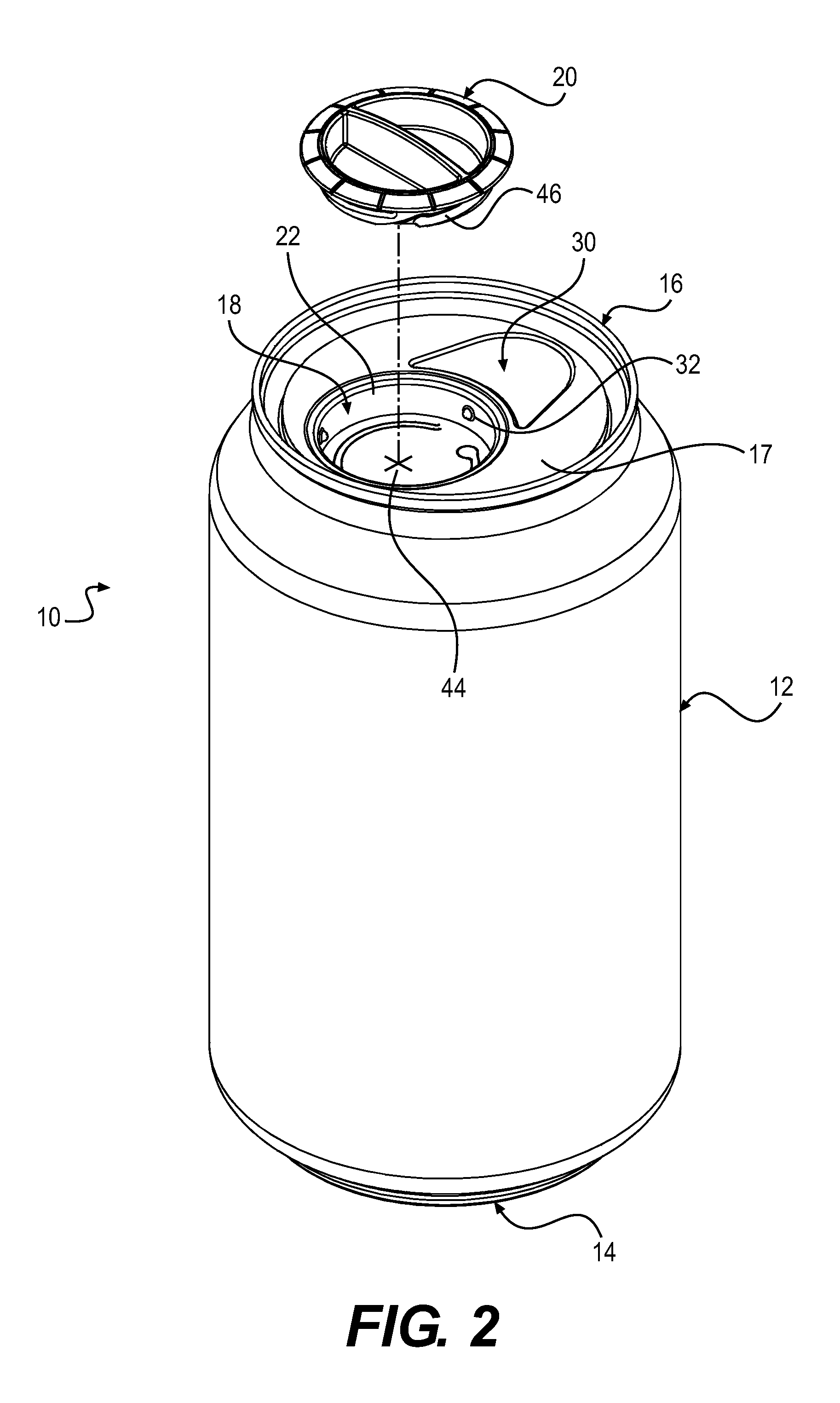Resealable beverage containers and methods of making same
a beverage container and sealable technology, applied in the field of sealable beverage containers, can solve the problems of not only litter, but also safety issues, and the edges of the pull tabs were not sharp enough, so as to prevent foreign objects from entering, prevent spillage, and reduce the effect of was
- Summary
- Abstract
- Description
- Claims
- Application Information
AI Technical Summary
Benefits of technology
Problems solved by technology
Method used
Image
Examples
Embodiment Construction
[0031]Referring to FIGS. 1 through 12, a beverage container 10 includes a cylindrical sidewall 12, a closed bottom wall 14, integrally formed with the sidewall 12 and a lid 16 connected to the sidewall 12 at the end opposite the bottom wall 14. In the illustrated embodiment, the beverage container is a can, wherein the bottom wall 14 and the sidewall 12 are formed from a single piece of aluminum material, using otherwise known processes. The aluminum material is a light weight aluminum alloy commonly used in the beverage can industry. The lid 16 is preferably made of the same light weight aluminum alloy material, and is joined at the upper end of the sidewall through likewise known processes. The lid 16 includes a cylindrical socket 18 which extends downwardly into the beverage container 10 from an upper wall 17. The socket 18 is formed near a peripheral edge or lip of the lid 16 as is customary in the art, to allow drinking from the beverage container 10. A cap 20 fits into the soc...
PUM
| Property | Measurement | Unit |
|---|---|---|
| pressure | aaaaa | aaaaa |
| translational movement | aaaaa | aaaaa |
| internal pressure | aaaaa | aaaaa |
Abstract
Description
Claims
Application Information
 Login to View More
Login to View More - R&D
- Intellectual Property
- Life Sciences
- Materials
- Tech Scout
- Unparalleled Data Quality
- Higher Quality Content
- 60% Fewer Hallucinations
Browse by: Latest US Patents, China's latest patents, Technical Efficacy Thesaurus, Application Domain, Technology Topic, Popular Technical Reports.
© 2025 PatSnap. All rights reserved.Legal|Privacy policy|Modern Slavery Act Transparency Statement|Sitemap|About US| Contact US: help@patsnap.com



